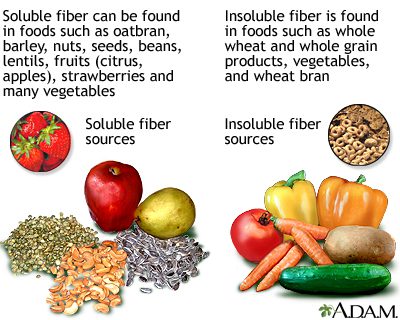Contents
Soluble and insoluble fibers: what are the differences?

The benefits of soluble fiber on the body
What is the role of soluble fiber in the body?
As the name suggests, soluble fiber is soluble in water. They include pectins, gums and mucilages. When they come into contact with liquids, they become viscous and facilitate the sliding of residues. As a result, they decrease the absorption of fats, bad blood cholesterol and triglycerides and help prevent cardiovascular disease. They also have the advantage of slowing the absorption of carbohydrates, and therefore of slowing down the rise in blood sugar, which is essential in the prevention of type 2 diabetes. They stimulate digestive transit less than insoluble fibers, which Makes them gentle on the intestine, they reduce digestive discomfort and prevent diarrhea while promoting the balance of the intestinal flora. Finally, as they slow down digestion, they prolong the feeling of satiety and therefore allow you to better control your weight. As these are water soluble fibers, it is essential to consume enough water (at least 6 glasses) throughout the day to benefit from their benefits.
Where is soluble fiber found?
You should know that most fibrous foods contain both soluble fiber and insoluble fiber. While soluble fiber can be found in fruits (rich in pectin such as apples, pears, oranges, grapefruit, strawberries) and vegetables (asparagus, beans, Brussels sprouts, carrots), their skin is often richer in insoluble fiber. Soluble fiber is also found in legumes, oats (especially oat bran), barley, psyllium, flax and chia seeds.
References 1. Dietitians of Canada, Food Sources of Soluble Fiber, www.dietitians.ca, 2014 2. Dietary fibers, www.diabete.qc.ca, 2014 3. H. Baribeau, Eat better to be on top, Editions La Semaine, 2014 |










